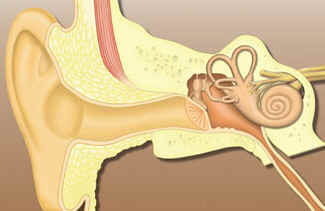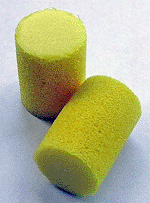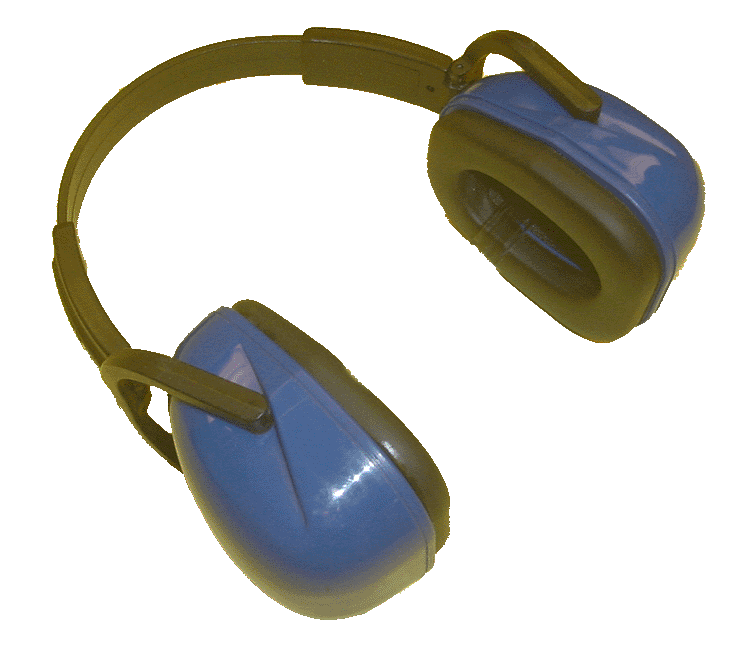 Hearing Protection
Hearing Protection
 when dispensing liquid nitrogen from bulk tank, or simply existing in any
(work area) location where the sound level exceeds 80 dB*.
Other operations likely to require hearing protection are operation of accelerator chains,
when dispensing liquid nitrogen from bulk tank, or simply existing in any
(work area) location where the sound level exceeds 80 dB*.
Other operations likely to require hearing protection are operation of accelerator chains,
 power tools, impact producing hand tools such as hammers, the use of explosives, lathes (wood or metal), precision machining and metal-working
equipment.
power tools, impact producing hand tools such as hammers, the use of explosives, lathes (wood or metal), precision machining and metal-working
equipment.
 a means of attenuating noise to below damaging levels
when and where it is not possible to reduce them through engineering. Ear covers
(also known as earmuffs or headsets) and insert-type earplugs (formable, premolded, or
custom molded, of many different shapes and compositions) are the hearing protection
devices which exist. All staff exposed to noise requiring hearing protection must
also participate in the Universities Hearing Protection program. Contact REM at
46113.
a means of attenuating noise to below damaging levels
when and where it is not possible to reduce them through engineering. Ear covers
(also known as earmuffs or headsets) and insert-type earplugs (formable, premolded, or
custom molded, of many different shapes and compositions) are the hearing protection
devices which exist. All staff exposed to noise requiring hearing protection must
also participate in the Universities Hearing Protection program. Contact REM at
46113.


Earplugs:
Always make sure your hands are clean before inserting earplugs. Always read the instructions supplied with the earplugs. Some earplugs – for example the
compressible foam type – come in only one size. If the plugs are made in several
sizes, you need the right size for each ear. To insert plugs: |
- Reach around your head and take hold of the back of your ear about
half way down
- Gently pull your ear outwards and upwards to straighten your ear
canal
- Insert the plug into your ear canal with the other hand.
|
| If plugs are compressible foam type: |
- Roll the plug slowly and smoothly into a thin crease-free cylinder
(depending on how small you roll the plug, it can take up to 30 seconds to do this,
possibly longer if you haven’t done it before)
- Immediately insert the plug well into the ear canal and hold it in
place until it has begun to expand and block the noise. Aim to get three-quarters of the
length of the plug into the canal.
|
| Remember -- Plugs can work loose and may need to be repositioned
occasionally. Remove plugs slowly so that suction does not hurt your ear. If
the earplugs are disposable, they should not be reused.
 Earmuffs:
Earmuffs:
Inspect the muffs and note which way they are meant to be
worn. Some earmuff cups are marked top or front and should be worn that way. Oval
shaped cups are meant to be worn so that the oval is vertical.
- Extend the headband to its maximum length.
- Brush as much hair as possible away from the ears
- Place the muffs over the ears, making sure that the ears fit right
inside the cups and are not pressed against the head
- Hold the cups firmly in place by pressing inwards and upwards with
the thumbs and tighten the headband so that it takes the weight of the cups and holds them
firmly in position
- Run your fingers around the cushions to check that they are making
a good seal against your skin.
|
 Proper hearing protection can only be chosen with the help of a
professional. The noise reduction ratio must be chosen for the work, after
assessment, and the fit must be evaluated by someone who knows what he's/she's doing.
(Do not just go choose something and stick it on or in your ears.) Earmuff
performance may be degraded by anything that compromises the cushion-to-flesh seal,
including other pieces of personal protective equipment such as eyewear, masks,
faceshields, and helmets. The maximum sound attenuation afforded by hearing
protection devices is limited by human body and bone conduction mechanisms. Even though a
particular device may provide outstanding values of noise attenuation the actual noise
reductions may be less because noise surrounding the head and body bypasses the hearing
protector and is transmitted through tissue and bone pathways to the inner ear.
Proper hearing protection can only be chosen with the help of a
professional. The noise reduction ratio must be chosen for the work, after
assessment, and the fit must be evaluated by someone who knows what he's/she's doing.
(Do not just go choose something and stick it on or in your ears.) Earmuff
performance may be degraded by anything that compromises the cushion-to-flesh seal,
including other pieces of personal protective equipment such as eyewear, masks,
faceshields, and helmets. The maximum sound attenuation afforded by hearing
protection devices is limited by human body and bone conduction mechanisms. Even though a
particular device may provide outstanding values of noise attenuation the actual noise
reductions may be less because noise surrounding the head and body bypasses the hearing
protector and is transmitted through tissue and bone pathways to the inner ear.
It takes two to three weeks to get used to wearing hearing protectors.
Once you are used to them you will, feel less stressed while you’re working, feel
less tired at the end of the day, and know your hearing is safe.
Remember that hearing protection attenuates
all sound, not just unwanted sound. It is important to be able to communicate when something
could be dangerous. Earplug users may not be able to hear a shouted warning or the sound of moving machinery.
If an earplug should break off in the ear, it may require professional removal.
|
 Keep muffs and plugs clean with soap and water. As soon as plugs
become hard or damaged get a new pair. Don’t stretch the headband of your
earmuffs – it makes them less effective. Replace the cushions on your earmuffs
as soon as they start to harden. If your earmuffs are damaged get the damaged part
replaced.
Keep muffs and plugs clean with soap and water. As soon as plugs
become hard or damaged get a new pair. Don’t stretch the headband of your
earmuffs – it makes them less effective. Replace the cushions on your earmuffs
as soon as they start to harden. If your earmuffs are damaged get the damaged part
replaced. |






 Hearing Protection
Hearing Protection  power tools, impact producing hand tools such as hammers, the use of explosives, lathes (wood or metal), precision machining and metal-working
equipment.
power tools, impact producing hand tools such as hammers, the use of explosives, lathes (wood or metal), precision machining and metal-working
equipment.